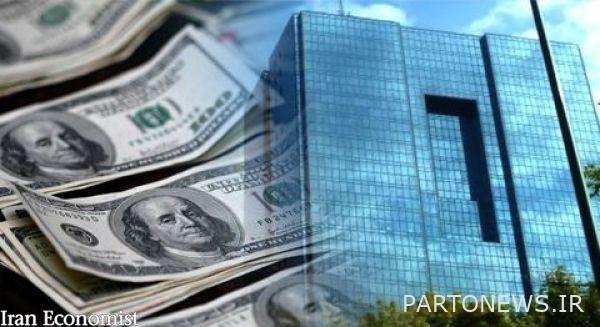Rising dollar prices and the central bank target

The free currency market closed below zero last week, according to Aquiran. The market maker, on the other hand, preferred to allow the dollar to rise in the formal market to reduce the dollar price gap. A policy that is meaningful on the part of some traders and a measure of emotion management on the verge of agreement.
Last week, the foreign exchange market was surrounded by negative and positive news, however, neither the news of the sudden return of the head of the Iranian negotiating team from Vienna was able to raise the price of the dollar, nor the readiness of the final text of the agreement forced the dollar to fall sharply. Slowly
Dollar price fluctuation range
Last week, the dollar started trading in the open market at a price of 26,160 tomans. In the middle of the week, Russia’s request for 90 minutes and the return of Ali Bagheri, Iran’s chief negotiator from Vienna to Tehran, could not push the dollar price above 26,380 tomans. Some traders believed that caution could not be ignored as long as the policy of negotiation continued and that the market should be taken into account. Therefore, the negative news did not cause a sharp increase in market demand. Subsequent events showed that traders were right; Bagheri returned to Vienna and the dollar fell on the day the news of his return broke. In total, the price of the dollar decreased by 360 Tomans at the end of the week compared to the beginning of the week, and ended its work with a price of 25,800 Tomans.
Herat dollar was traded at 24 thousand 840 Tomans on Thursday, which had started the week at 25 thousand 290 Tomans and decreased by 450 Tomans compared to the beginning of the week and had the highest price decrease among the neighboring markets. The Sulaimaniyah dollar also rose from 25,900 to 25,500 tomans.
Tangled buyers, like other traders, became more cautious as the week drew to a close. The dirham was traded at the price of 7,050 tomans at the beginning of the week and was at the border of 7,000 tomans at the weekend. A comparison of dirhams and free market dollars on the first and weekend shows that traders were more daring to buy dirhams at the beginning of the week and more cautious at the end of the week.
The European currency was also sold on Thursday at a price of 27,291 tomans.
Message to reduce a gap
In the organized market, unlike the free market, the dollar exchange rate was rising. This market started with 24 thousand 333 Tomans and at the end of the week the dollar was sold at 24 thousand 619 Tomans.
With the decrease in the price of the dollar in the open market and the increase in the price of the dollar in the market consisting of a gap from 1327 tomans at the beginning of the week to 1181 tomans at the end of the week. Reducing the gap in the rising dollar in this way was significant for some traders. In their view, the Central Bank, as the maker of the foreign exchange market, has decided not to allow the emotional reduction of prices in the foreign exchange market on the eve of the agreement. Because the emotional decline at the current stage carries the risk of price increases in the post-agreement. Price fluctuations at that time, if severe, could change market expectations.
According to some traders, Prime Minister Ibrahim Ra’isi has authorized Ali Salehabadi to manage the price of the dollar in accordance with central bank policies. Therefore, the central bank intends to manage the psychological atmosphere of the market on the eve of the agreement by not preventing the dollar from rising in the organized market.
Of course, this view is criticized by some analysts. According to critical analysts, the price of the dollar is a multifaceted variable and is not solely within the control of the central bank. Hence the central bank alone can not be decisive. They attribute the increase in the price of the dollar in the organized market to its activation and internal interactions at the end of the year, and believe that if the central bank opens its hand to reserves, it will lower the price to the desired threshold. Of course, considering the price of 23 thousand tomans in next year’s budget, this threshold can not be less than this. In the Nima system, the dollar was traded at a price of 24,068 tomans over the weekend.
Fear of coins and gold from war
The most important influential news in the ounce gold market was the Russia-Ukraine war and the news of the war. Gold went through a volatile week, crossing the important resistance level of two thousand dollars, which was the highest price in the past year and a half, but after two attacks on this level, it has not been able to stabilize above this price.
Domestic gold, however, moved in the opposite direction of the dollar under the influence of rising global ounce prices. Each gram of 18-carat gold was traded at the price of one million and 217 thousand tomans at the end of the week, the half coin reached over seven million tomans and the Emami coin experienced 12 million and 211 thousand tomans.

